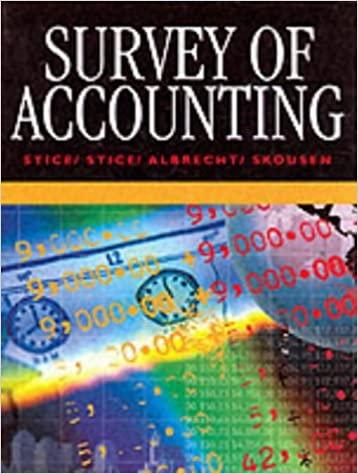As of January 1, 2000, Kendrick Corp. had the following balances in its general ledger: begin{tabular}{|c|c|c|} hline
Question:
As of January 1, 2000, Kendrick Corp. had the following balances in its general ledger:
\begin{tabular}{|c|c|c|}
\hline & Debits & Credits \\
\hline Cash & $\$ 31,500$ & \\
\hline Accounts Receivable . . . . . . . . . . . . & 23,500 & \\
\hline Inventory . . . . . . . . . . . . . . . . . . . . . . . . . . . . . . . . . . . . . . . & 92,000 & \\
\hline Office Building. . . . . . . . . . . . . . . . . . . . . . . . . . . . . . . . . & 208,000 & \\
\hline Accounts Payable . . . . . . . . . . . . . . . . . . . . . . . . . . . . . . . & & $\$ 16,500$ \\
\hline Mortgage Payable . . . . . . . . . . . . . . . . . . . . . . . . . . . . . . . . . . . . . . & & 180,000 \\
\hline Notes Payable . . . . . . . . . . . . . . . . . . . . . . . . . . . . . . . . . . . . . . . . & & 68,500 \\
\hline Capital Stock . . . . . . . & & 57,500 \\
\hline Retained Earnings . . . . . . . . . . . . . . . . . . . . . & & 32,500 \\
\hline Totals . . . . . . . . . . . . . . . . . . . . . . . . . . . . . . . & $\$ 355,000$ & $\$ 355,000$ \\
\hline
\end{tabular}
Kendrick had the following transactions during 2000 . All expenses were paid in cash, unless otherwise stated.
a. Accounts payable as of January 1, 2000, were paid off.
b. Purchased inventory for $\$ 35,000$ cash.
c. Collected $\$ 21,000$ of receivables.
d. Sold $\$ 185,000$ of merchandise, 85 percent for cash and 15 percent for credit. The cost of goods sold was $\$ 98,500$.
e. Paid $\$ 25,000$ mortgage payment, of which $\$ 15,000$ represents interest expense.
f. Paid salaries expense of $\$ 60,000$.
g. Paid utilities of $\$ 6,300$.
h. Paid installment of $\$ 5,000$ on note.
1. Prepare journal entries to record each listed transaction. (Omit explanations.)
2. Set up T-accounts with the proper account balances at January 1, 2000, and post the journal entries to the T-accounts and prepare a trial balance for Kendrick Corp. at December 31, 2000 .
3. Interpretive Question: If the debit and credit columns of the trial balance are in balance, does this mean that no errors have been made in journalizing the transactions? Explain.
Step by Step Answer:

Survey Of Accounting
ISBN: 9780538846172
1st Edition
Authors: James D. Stice, W. Steve Albrecht, Earl Kay Stice, K. Fred Skousen





